David Chang’s guide to Koreatown, LA
By Rachel Sullivan
January 2024
The Netflix star and restaurateur on where to find the best “Seoul food” in the heart of California
“Intimidating,” says David Chang, when challenged to come up with one word to describe Koreatown (or, to locals, simply “K-Town”). “Even with my friends that are from LA but not Korean, it’s very intimidating because you don’t know where to eat—and if you do know where to eat, what do you eat? How do you order all of these things? I don’t know if I will ever figure it out.”
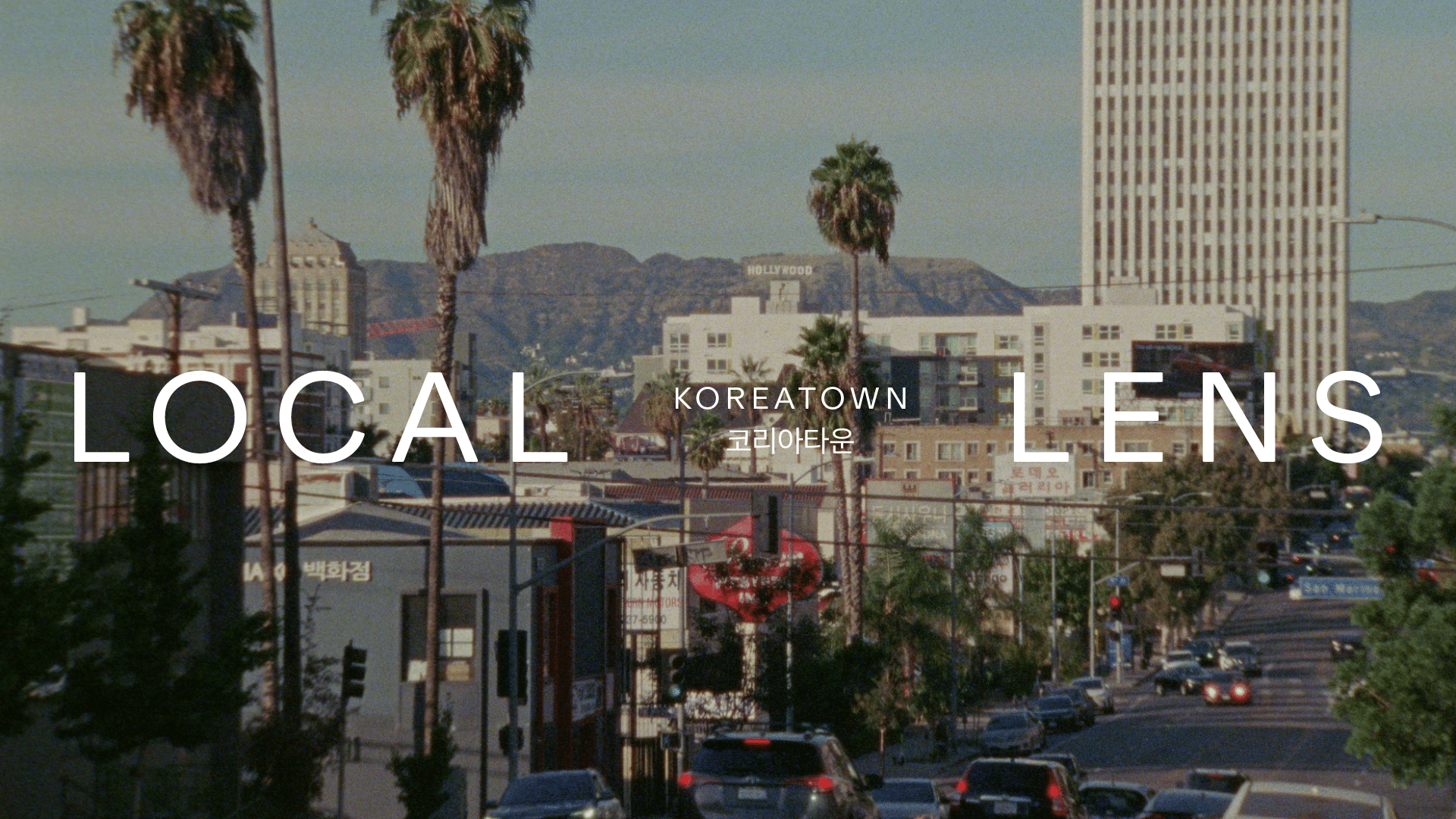
The child of Korean parents, the Virginia-born, Los Angeles-resident chef is the perfect guide to help us figure our way around this second Seoul, a district of LA so centrally located that it was considered the original Hollywood. But homogenized it isn’t: Where other city enclaves have been gentrified out of existence, K-Town is doubling down on its identity.
One thing that’s certainly true: Pushing past that fear to explore this unique crucible of Korean culture will repay you a million times over—in pure deliciousness. “I think K-Town can represent a lot of immigrant ’burbs, throughout America,” Chang says. “People either feel like they know everything about it, or they are intimidated by it. And there are a lot of delicious opportunities they’re just leaving on the table, because either they think they know, or they don’t know anything at all.”
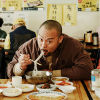
Chang at Ham Hung, known for its North Korean noodle soup
From his own Momofuku restaurant group to Netflix’s Ugly Delicious, Chang has built a dining and TV empire around being an equal-opportunities, foul-mouthed food obsessive, a proponent of a “taste first, always” mantra. Whether it’s a Michelin-starred super-restaurant or kick-ass hole-in-the-wall noodle shop, he doesn’t care: If it tastes good, it is good. There’s nothing else to it.
So, for the K-Town first-timer: Where to start? “There are five reasons people go to K-Town,” says Chang. “They go for food. They go to a concert at The Wiltern. They go to party. They go for karaoke. And finally, they go for spa.”
Once you’ve oriented yourself by the iconic Koreatown sign (built in 1982 on the corner of Olympic and Vermont, after the local Korean community lobbied for it), old-school strip malls and the riot of hangul (Korean alphabet) neon signs, it’s time to start thinking about where to eat. “There’s entry-level, mid-level, and then real advanced-level Korean food,” says Chang. “It’s like moving up through different levels of a video game. Start with the places that have catered to a non-Korean audience for a while, Park’s or Chosun Galbee. They always make the ‘best of’ lists: Use them as an entry point. But then you need to discover Koreatown on your own because so much of it is not written about.”
With K-Town, every time you go, you get FOMO
And how to do that? “You have to take baby steps,” he says. “When I’m going to eat somewhere new, I do some homework. It’s not sexy, but it works.” Once confidence is up, have an adventure: “Those restaurants that are really good, I’d say: Eat at the restaurant next door and discover something on your own.” The lines outside many of the buzzier places provide a perfect vantage point to spot the place you’ll eat next time, and led to the K-Town phenomenon of entire blocks of amazing restaurants springing up. “I genuinely believe almost every restaurant in K-Town is awesome,” says Chang. “They just haven’t been talked about, or given the time to make the right kind of mistakes.”
5 must-try foods in Koreatown
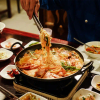
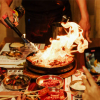
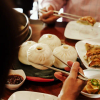
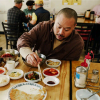
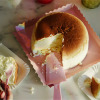






One key thing to know: “Most of the restaurants that are really great are about only one thing.” That could be seolnongtang—a “tremendous and delicious” milky-white bone broth soup with onion, scallions, Korean radish, and a ton of seasoning—at Han Bat Sul Lung Tang. It could be a bubbling bowl of gut-busting, belt-loosening, as-spicy-as-you-can-bear chicken kalguksu (noodle soup), with the most perfect al dente hand-cut noodles, at Hangari. The general consensus now is that the food in K-Town is pretty much on par with what you’d find in Seoul.

A cultural guide to Los Angeles
Your essential guide to the best things to see and do in the City of Angels
So, how has K-Town’s stubborn staying power been affected by the explosion in interest prompted by Squid Game, Parasite, and the like? “Korean culture has gone on fire in the past few years,” says Chang. “I wouldn’t have predicted that. K-Town is in transition: The food is becoming more diverse. And I think that happens time and time again, right?”

The red-leather-clad, chandelier-adorned temples of fun at Pharaoh Karaoke
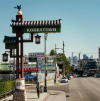
The iconic K-Town sign on the corner of Olympic and Vermont
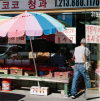
Stop off at one of the many excellent Korean grocery stores

Food with friends: Chang with Rekstizzy from Netflix show Beef and K-rapper Dumbfoundead
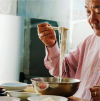
One tip: Never cut the noodles. “If I cut my naengmyeon, my dad would disown me.”
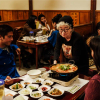
Odri Chang at Chunju Han Il Kwan is credited with bringing “army stew” to the U.S.

“All of K-Town is centered around Aroma Golf,” says Chang

“Spa and sauna is a cool element of K-Town,” says Chang. Be aware: Most have a strict no-swimwear rule. Pictured: Spa L.A.

“Alexandria Plaza is the mother of all strip malls. Open 24/7, it turns over more tables in a night than most places in a week. You want kalguksu at 5am? You got it.”

K-Town’s art deco venue, The Wiltern, started as a movie theater in the 1930s but has featured live music since the 1980s

The red-leather-clad, chandelier-adorned temples of fun at Pharaoh Karaoke

The iconic K-Town sign on the corner of Olympic and Vermont

Stop off at one of the many excellent Korean grocery stores

Food with friends: Chang with Rekstizzy from Netflix show Beef and K-rapper Dumbfoundead

One tip: Never cut the noodles. “If I cut my naengmyeon, my dad would disown me.”

Odri Chang at Chunju Han Il Kwan is credited with bringing “army stew” to the U.S.

“All of K-Town is centered around Aroma Golf,” says Chang

“Spa and sauna is a cool element of K-Town,” says Chang. Be aware: Most have a strict no-swimwear rule. Pictured: Spa L.A.

“Alexandria Plaza is the mother of all strip malls. Open 24/7, it turns over more tables in a night than most places in a week. You want kalguksu at 5am? You got it.”

K-Town’s art deco venue, The Wiltern, started as a movie theater in the 1930s but has featured live music since the 1980s

The red-leather-clad, chandelier-adorned temples of fun at Pharaoh Karaoke
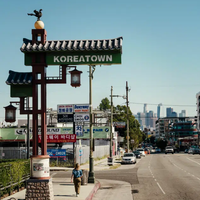
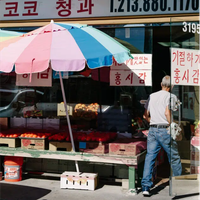
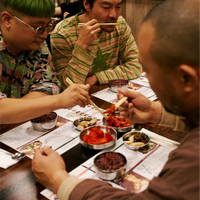

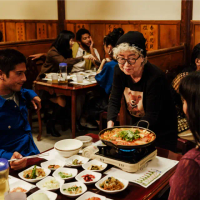
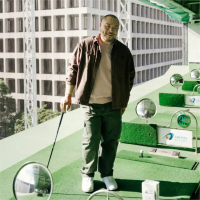
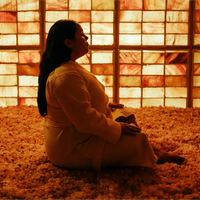
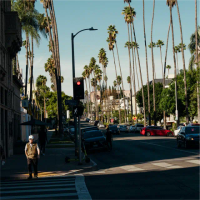
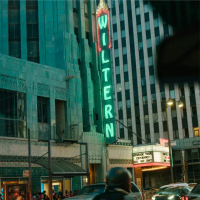
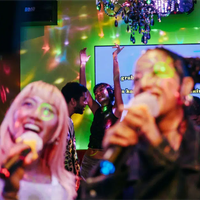




















What’s on Chang’s must-taste list, before things start to change too much? “I was there the other day with my wife and kids,” he says. “My kids love Korean barbecue. It’s great food for families. But last time I spotted this gamja-tang place. Gamja-tang is literally boiled, spicy pork neck soup. And it looks gnarly. But it’s delicious. It’s this cauldron of spicy, spicy deliciousness. So next time, when my wife and I go for a date night, it’s like, hey, let’s go get gamja-tang.”
This is both the endless problem with K-Town, and the reason he keeps on going back. “Every time you go there, you get FOMO,” he says. “But then you’re like, oh, next time.”
K-Town has something for everyone: From “entry-level” Korean barbecue at Park’s, via fish-shaped, custard-filled croissants at MuMu Bakery, to the “advanced-level” naengmyeon at Ham Hung.

Rachel Sullivan is Expedia Group’s Executive Creative Director of Editorial. Before joining Expedia, she had a career in magazine publishing, writing for titles from Condé Nast Traveller to Brides, Red and The Sunday Times.
